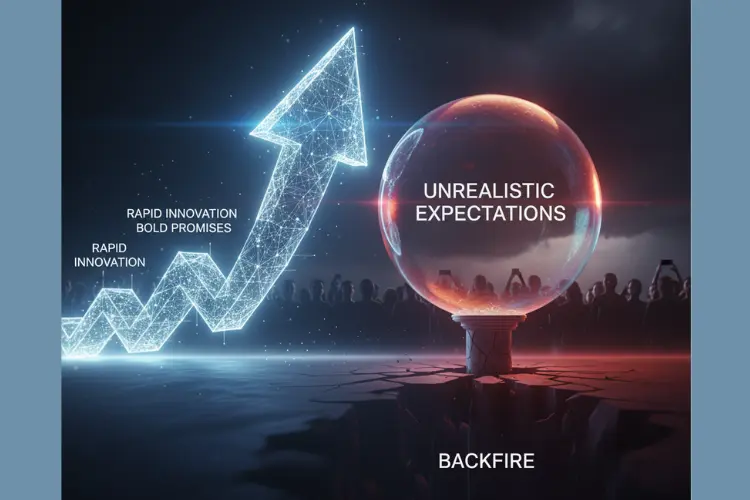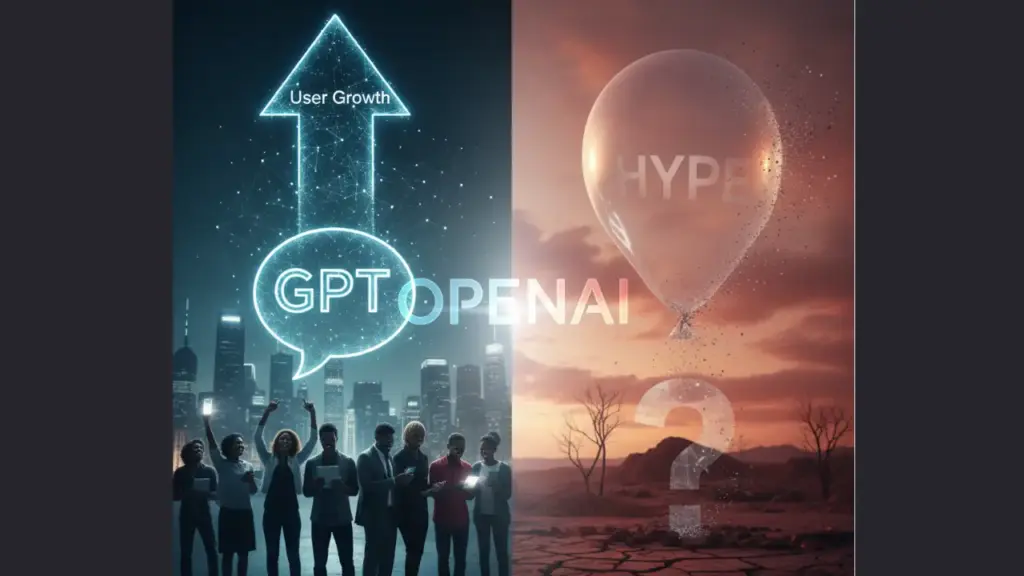1. Introduction: The ChatGPT Explosion Everyone’s Talking About
OpenAI has once again dominated headlines with its latest ChatGPT announcements. The company claims massive user growth, new features, and an ambitious app integration that could change how people interact with AI.
But beneath the excitement, questions remain. Are these numbers truly reflective of sustainable success—or just clever marketing?
ChatGPT’s popularity has indeed skyrocketed, but the revenue tells a different story. While OpenAI boasts hundreds of millions of users, monetization struggles and growing competition raise doubts about how long the hype can last.
Let’s dive into what’s really happening behind OpenAI’s big ChatGPT push—and whether this growth is as impressive as it seems.
2. OpenAI’s Big Reveal: What’s New with ChatGPT
In its latest announcement, OpenAI unveiled several major updates designed to make ChatGPT more powerful and user-friendly.
The most notable changes include:
- The introduction of ChatGPT apps, allowing users to access third-party tools inside the chat interface.
- The launch of AgentKit, which lets developers create AI agents capable of performing real-world tasks.
- Enhanced personalization and workflow automation features for businesses and creators.
OpenAI is positioning ChatGPT as more than just a conversational AI—it’s becoming an AI operating system. Users can now perform complex actions like analyzing data, booking meetings, or coding—all without leaving ChatGPT.
However, with great innovation comes great complexity. Each new feature introduces new challenges around privacy, data control, and ethical AI use.
3. The Numbers Game: Users vs. Revenue Reality
OpenAI proudly claims that ChatGPT now serves over 200 million weekly active users, making it one of the fastest-growing digital platforms ever. But growth on paper doesn’t always equal business success.
Most of ChatGPT’s users fall into the free-tier category, particularly students, researchers, and hobbyists. This user base drives engagement but contributes little to revenue. When the academic season ends, usage often drops—revealing a fragile growth pattern.
Revenue tells a different story. Despite the hype, OpenAI’s reported earnings remain modest compared to the scale of its user base. Subscriptions to ChatGPT Plus bring in income, but the conversion rate from free to paid users is still limited.
As one fractional CTO recently noted, “AI platforms face the same challenge as social media once did—mass adoption doesn’t guarantee monetization. You need retention, trust, and a real value loop.”
That’s where the concern lies: can OpenAI sustain momentum once the novelty fades?
4. Inside ChatGPT Apps: A New Ecosystem or Just Add-Ons?
OpenAI’s “ChatGPT apps” feature marks a major shift. It allows developers to create mini-applications that work inside ChatGPT—similar to plugins, but more integrated.
This move could turn ChatGPT into an AI-powered ecosystem like Apple’s App Store or Google Play. Users can access productivity tools, coding assistants, data visualizers, and even creative apps—all within the same chat environment.
From an innovation standpoint, it’s brilliant. But it also raises red flags.
By controlling both the platform and distribution, OpenAI could end up centralizing too much power. Developers may depend heavily on OpenAI’s ecosystem for exposure, while users could lose transparency about how their data is used across apps.
If not managed carefully, the ChatGPT app model could lead to monopolistic behavior—where OpenAI decides which tools thrive or vanish.
The tech world has seen this before. Apple faced criticism for over-controlling its App Store. If OpenAI repeats that pattern, innovation could slow, and developers might migrate elsewhere.
5. AgentKit: Power or Privacy Risk?
AgentKit is OpenAI’s boldest step yet. It allows ChatGPT to execute real-world actions—sending emails, managing databases, or connecting with APIs.
On paper, this gives businesses incredible automation potential. Imagine using ChatGPT as a virtual operations assistant that can handle customer support or analyze data autonomously.
But the implications are serious. Giving AI the power to act beyond the chat window introduces privacy, security, and control risks.
If an AI can perform actions without strict oversight, even small vulnerabilities could lead to data leaks or unauthorized activity. Moreover, AgentKit’s deep integration could allow OpenAI to collect vast amounts of user and business data, potentially sparking future regulatory challenges.
For fractional CTOs and tech leaders, the question isn’t whether this technology works—it’s whether it’s safe and sustainable. Without strong governance, AgentKit could easily cross the line between convenience and intrusion.
6. The Future Outlook: Sustainability and Trust Issues
Every tech boom faces a reckoning, and OpenAI’s may come sooner than expected.
The company’s rapid expansion is impressive, but it also creates immense operational and ethical pressure. Sustaining user engagement requires constant innovation, yet too many changes too fast can alienate users or strain trust.
Another challenge lies in retention. Many ChatGPT users are casual experimenters—people trying the tool once or twice before moving on. When students or seasonal users leave, active usage could drop dramatically.
Competitors like Anthropic, Google, and Meta are aggressively entering the same market with their own generative AI systems. Each offers unique advantages, from better transparency to deeper ecosystem integration.
For OpenAI, the future depends not just on new features, but on how well it can balance innovation with reliability. Businesses want predictable results, developers want fair access, and users want privacy. Meeting all three expectations will be OpenAI’s toughest challenge yet.
7. Why the Hype Could Backfire
Hype drives interest—but it can also create unrealistic expectations.
OpenAI’s marketing strategy has always centered on bold promises and rapid innovation. While this attracts attention, it also sets a high bar that’s hard to maintain.
If user experience declines or features underdeliver, users may quickly lose trust. In the fast-moving AI landscape, trust is the currency of longevity. Once it’s broken, rebuilding it becomes an uphill battle.
Another issue is transparency. OpenAI’s decision-making, especially regarding data collection and model updates, remains largely opaque. Without greater openness, regulators and users may grow skeptical.
Fractional CTOs working with startups and enterprise clients are already advising teams to diversify their AI dependencies instead of relying solely on ChatGPT. That’s a clear sign that confidence in OpenAI’s ecosystem isn’t universal.

8. Conclusion: Growth Is Impressive—But Is It Real?
OpenAI’s ChatGPT evolution represents a defining moment for the AI industry. The platform’s growth, innovation, and influence are undeniable. But when you strip away the excitement, the real story is more complex.
User growth without consistent revenue, powerful features without clear safeguards, and expansion without transparency—these are warning signs that deserve attention.
OpenAI’s success now depends on how it manages trust, sustainability, and accountability. If it can balance these forces, it will define the next decade of AI. If not, it risks becoming another cautionary tale of tech hype gone too far.
For businesses, developers, and especially fractional CTOs, this is the time to watch closely. Understanding the difference between real progress and inflated growth can make or break future AI strategies.
As discussed in StartupHakk, innovation isn’t just about being first—it’s about being right. The companies that balance vision with responsibility will shape the next era of intelligent technology.




